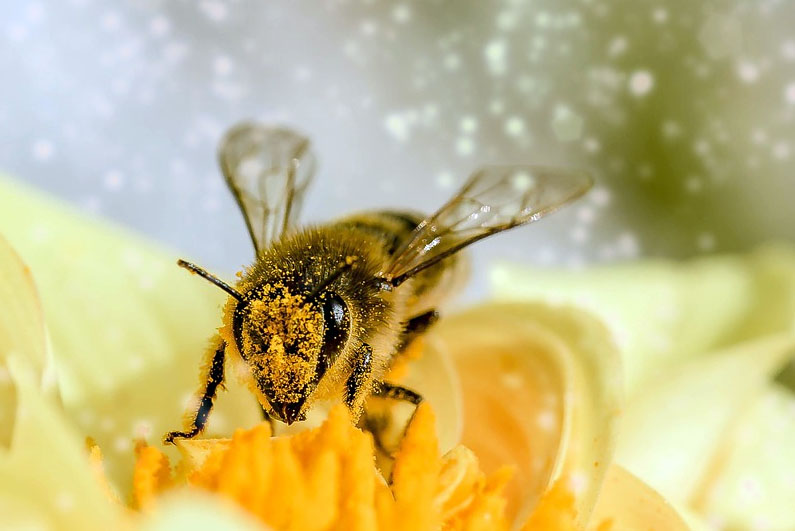
by Herb Exchange | Mar 28, 2019 | Gardening, Flowers, Pests and Problems |
Truth be told: I’m a huge fan of apocalyptic or dystopian fiction. Or, a fancier term, ‘speculative fiction’. Meaning the ‘what ifs’ in life; what if there was a pandemic, a nuclear explosion, or some cataclysmic event that creates a VERY challenging world for those left behind.
I’m no writer, but if I was, I think an interesting topic that could jump start one of these novels would be the elimination of pollinators from our natural world. Oh, wait. That is already happening. Let’s consider the bees. We, and I’m including myself in this collection, are terrible for bees. We’ve caused pollution, we’ve destroyed a lot of their habitat and the use of certain pesticides have threatened their existence. There is also the issue of a parasitic mite that is a huge contributor to their decline.
Bees. Did I mention that we can’t live without them?
(more…)
by Herb Exchange | Jul 11, 2015 | Basics, Gardening, Pests and Problems |
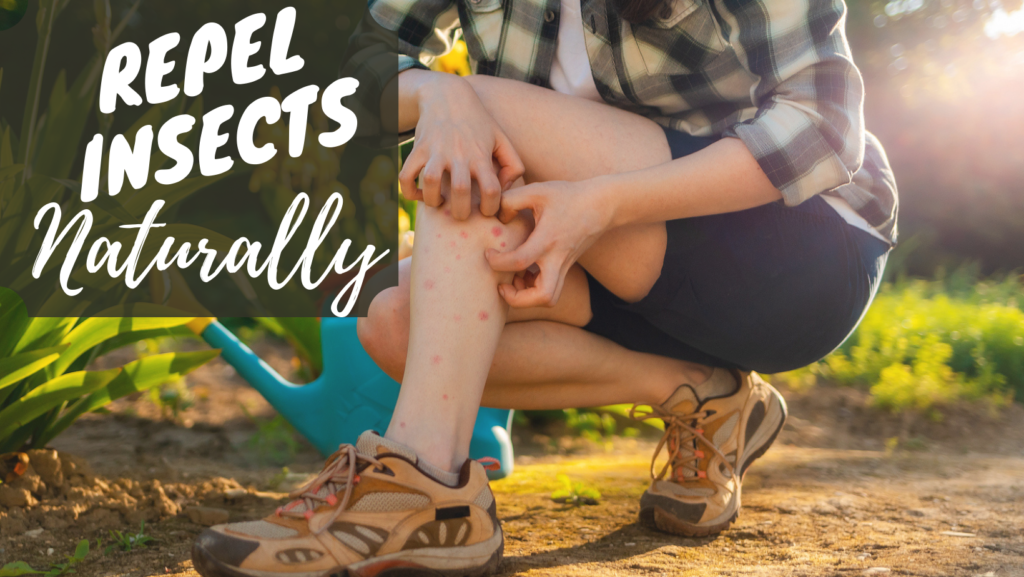
We’ve all got someone on speed dial in the summer months to help with these annoying pest, just in case we’re unlucky enough to have an infestation of insects in our home. I know a few people who have added a fly screen to their double glazed windows, in the hopes of catching these flies before they enter the home. But what did people do before the existence of these specialized teams, and could we bring back some of these traditional methods when we can’t get hold of a pest control service? Throughout history, man has been plagued by insects. And, man has fought back. But, not with DEET or OFF, but inventive uses of plants, although if you wanted you could use DEET free bug spray to fight them off, but once upon a time these didn’t exist so we have to use something else. These plants are still effective, and a natural means of keeping modern man comfortable from the bites and annoyances of insects, especially in the summer months.
Here are a few popular options. Read more about them below:

Feverfew shares the same natural insect repelling qualities because it contains the same natural chemical, pyrethrin. Feverfew is known to repel moths, cockroaches, flies, ants, mosquitoes, mites, bedbugs and mice! It is best planted outside along paths and close to windows and doorways and around patios. It is especially effective when planted with citronella geraniums, lemon grass and lavender.

Known as Fleabane, works to repel ticks and fleas, as well as mosquitoes and gnats. Crushed pennyroyal leaves can be rubbed onto the skin as an effective insect repellent. Additionally, you can also rub the leaves on dogs to help repel fleas and ticks. But be careful, pennyroyal could potentially be toxic to your dog, so if they have been infested with fleas and ticks, you may want to have a look at these essential oils for fleas and ticks instead, so you can help them to be free from these insects, as well as protecting their skin and coats at the same time. But it can be used effectively for other things. Pennyroyal is often used in commercial natural insect repellent creams and sprays. Pennyroyal is great to plant in the garden, but it is best utilized as a topical insect repellent applied to the skin.

A member of the Mentha family, is known to deter mice and ants if planted around the foundation of the home. It is recommended that you identify the ‘trouble spots’ where the pests are entering the home, and plant 3 – 7 plants at each entry point. Shallow bowls of water filled with mint leaves placed in the pantry is also known to keep mice away.

is a great mosquito repellent. Planted in large containers on a deck, patio or by the pool it does deter most flying pests. In the landscape, it makes a lovely grass with the same repelling qualities. It is especially effective when planted in combination with Feverfew and Lavender.

is most useful for repelling mosquitoes and gnats when planted in the garden; it can also be planted in pots and placed by doorways and windows. As with feverfew and lemongrass, lavender is best planted in the garden around seated and eating areas and also around windows and doors. You can cut and dry lavender and place on windowsills to stop mosquitoes entering the house. Put dried lavender in closets to repel moths and keep clothes smelling fresh.

has a mixed reputation and it is hard to say whether or not this LOVELY and EASY TO GROW geranium is actually effective at warding off mosquitoes. It has the citronella scent, which leads one to believe that it has the active ingredient used in so many commercial products. However, there are those who say that it is as far as it goes, fragrance. In our own ‘tests’ we think that when the leaves are crushed and rubbed onto the skin, there is nothing better nor more fragrant at fighting those buzzing nuisances!
There are MANY more plants to help with pest issues.
Checkout our full selection of herbs & plants that help repel insects naturally.
by Briscoe White | Jun 26, 2015 | Gardening, Miscellaneous, Pests and Problems |
These unattractive enemies have taken over my squash, and I am spending much of my time and energy in a war against them. Squash Beetles ~ nasty little things that suck the life out of the plants I’ve been nurturin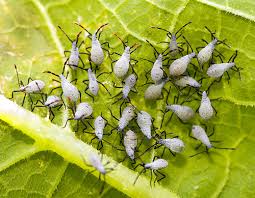 g since I first put seed to soil in mid March. You name it, I’ve tried it : Diatomaceous Earth, Rotonone Powder, Pyrethrum Spray … even the time consuming and not so pleasurable task of hand picking these creatures off of my squash leaves. I’ve read articles, researched remedies and honestly, felt a lot of stress that is not a usual part of my post-spring mentality. This ‘war’ runs against all of the reasons that I love growing plants; growing puts me back in touch with the natural rhythms and harmony of the natural world. I like working WITH nature, not against it. But, this is an on-going war and I refuse to surrender.
g since I first put seed to soil in mid March. You name it, I’ve tried it : Diatomaceous Earth, Rotonone Powder, Pyrethrum Spray … even the time consuming and not so pleasurable task of hand picking these creatures off of my squash leaves. I’ve read articles, researched remedies and honestly, felt a lot of stress that is not a usual part of my post-spring mentality. This ‘war’ runs against all of the reasons that I love growing plants; growing puts me back in touch with the natural rhythms and harmony of the natural world. I like working WITH nature, not against it. But, this is an on-going war and I refuse to surrender.
This whole unfortunate situation brings me back to the reason that I LOVE growing herbs and making an herb spiral. Although they are not 100% free of worries, herbs have VERY FEW natural ‘enemies’. My greenhouses are filled with over 150 different varieties of herbs, but I can safely say that not much of my time is spent ‘fighting’ or ‘fretting’ about pests. These plants are really not bothered by insects the way fruit and vegetable plants can be plagued. Most pest issues occur when trying to grow herbs indoors, but when planted in the garden, they seem to have much fewer pest issues. Not, the qualifier is that you provide the best growing conditions – enough light, water and make sure that there is good air flow around each plant. You do your part, the herbs will do theirs. On the other hand, I’ve done my part, and more, in the case of the squash beetles and all I’m getting is aggravation! Not sure who will ‘win’ this battle ~
by Briscoe White | Feb 7, 2011 | Basics, Gardening, Growing, Herbs, Pests and Problems |
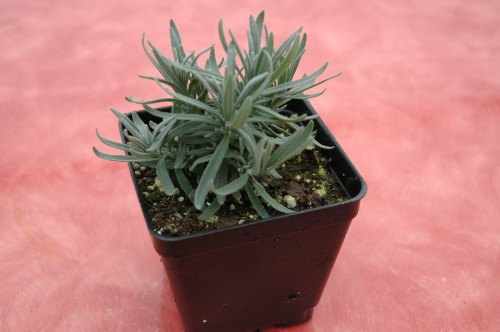
Healthy Lavender
Keeping potted lavender inside for winter can be tricky. They are so touchy about wet feet, they can turn from beautiful to pitiful in a few days. Overcast days with little sun are the perfect breeding ground for all the fungus that prey on lavender plants. Like potting succulents, sand should be added to the potting soil to insure quick drainage.
One sign of trouble is algae growing on the soil surface. This is an indication the soil is too wet for too long. When weather conditions are favorable, fungus will quickly colonize a water logged lavender. To save plants already infected, trim all dead leaves and stems. Clean all debris from the soil surface. Dry the soil quickly, even if you must remove the plant from the pot.
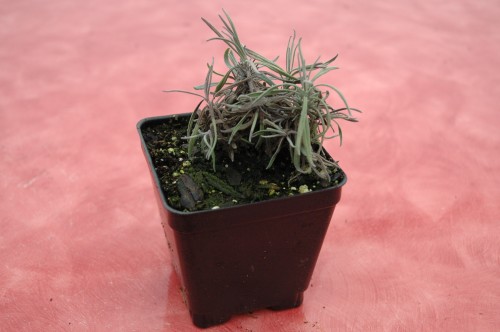
Fungally infected Lavender
There are many fungicides available, some are biological, others chemical. This natural fungicide is safe for kids and pets so if you’re conscious about little fingers or paws playing in the garden, a natural fungicide is often a better choice than a chemical one. In our greenhouse, we treat lavender every week by first spraying a Hydrogen Peroxide disinfectant, then a biological fungicide. Applying chemical fungicides takes less time because it has a residual effect for a week or more, but because we grow mostly herb plants that will be cut and used for culinary purposes, they must be clean and healthy to eat. Though the biological type does not last as long and must be applied more regularly, it’s worth the extra time and effort to ensure that our plants are healthy and treated in an all-natural way.
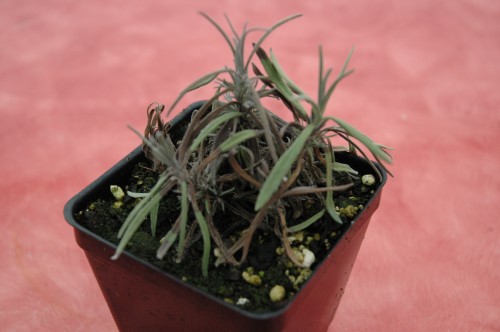
Lavender killed by fungal infection
We prefer to use PlantShield HC Biological Fungicide, which uses an active natural microbe to prevent disease from growing on the root structures and foliage of our plants. We drench the actual soil, rather than the leaves themselves, which allows this natural microbe to saturate the soil and protect the plants from mildew, fungi and other root pathogens. This is just one key step in our promise to ensure healthy, all natural herbs and flowers for our customers. Because of all of the careful nurturing that we employ at The Growers Exchange, we know our plants like the backs of our hands. Staying constantly familiar with our plants allows us to keep a close eye on quality control, and our attention to detail is something we pride ourselves on. Because of this process, we don’t let anything leave our greenhouse that we wouldn’t want to plant in our own garden, so you can be sure that when you order from us, you’re getting only the very best!









 g since I first put seed to soil in mid March. You name it, I’ve tried it : Diatomaceous Earth, Rotonone Powder, Pyrethrum Spray … even the time consuming and not so pleasurable task of hand picking these creatures off of my squash leaves. I’ve read articles, researched remedies and honestly, felt a lot of stress that is not a usual part of my post-spring mentality. This ‘war’ runs against all of the reasons that I love growing plants; growing puts me back in touch with the natural rhythms and harmony of the natural world. I like working WITH nature, not against it. But, this is an on-going war and I refuse to surrender.
g since I first put seed to soil in mid March. You name it, I’ve tried it : Diatomaceous Earth, Rotonone Powder, Pyrethrum Spray … even the time consuming and not so pleasurable task of hand picking these creatures off of my squash leaves. I’ve read articles, researched remedies and honestly, felt a lot of stress that is not a usual part of my post-spring mentality. This ‘war’ runs against all of the reasons that I love growing plants; growing puts me back in touch with the natural rhythms and harmony of the natural world. I like working WITH nature, not against it. But, this is an on-going war and I refuse to surrender.

